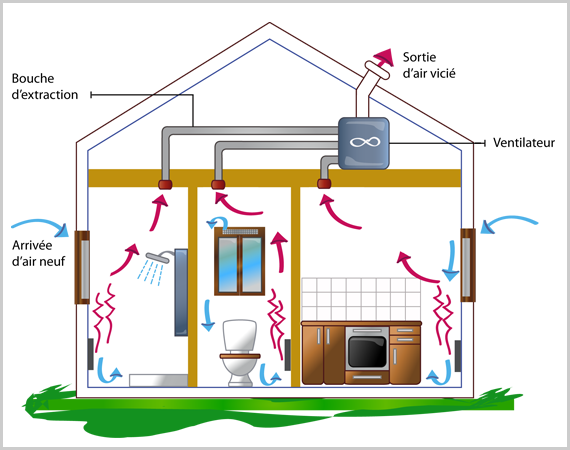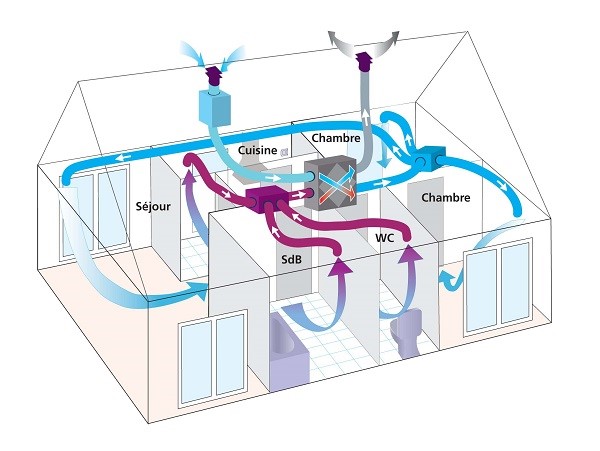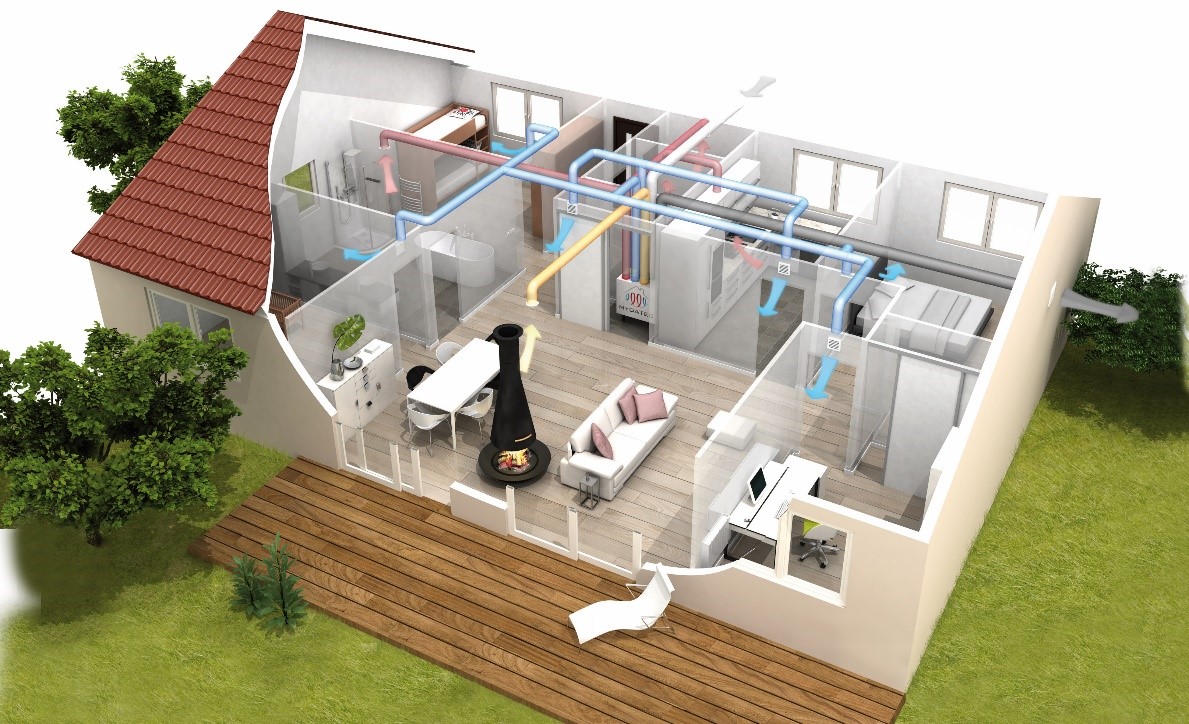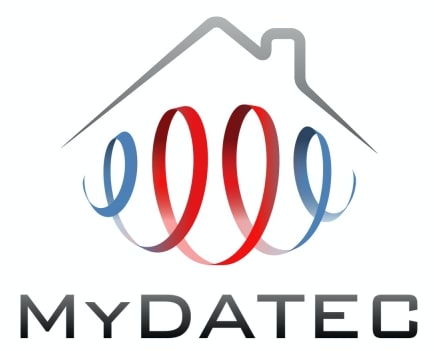SINGLE FLOW VMC VS DOUBLE FLOW
SINGLE FLOW VMC

SELF-REGULATING SINGLE FLOW VMC
Single flow ventilation (Reno)
Fixed flow rates
+ Correct air renewal
– Very high heat loss
HUMIDITY SENSITIVE SINGLE FLOW VMC
Single-flow humidity sensitive CMV (New)
Variable flow rates
– Poor air renewal (3x less than self-regulating)
– High heat loss
The common points
+ Inexpensive equipment
– No filtration of the air entering the IM
– Acoustic and aesthetic nuisance
– No energy conservation
Static Double Flux CMV
Benefits
+ Little heat loss due to ventilation
+ Fresh air filtration
+ No acoustic or aesthetic nuisance
+ Bypass of the heat exchanger in summer (freecooling)
Disadvantages
– More complex installation
– More expensive equipment
– Many references
– Regular maintenance
– Risk of freezing of the exchanger
– Variable exchanger efficiency depending on the temperature and flow rate through the exchanger
– In winter: maximum supply air temperature of 15-16°C


Thermodynamic Double Flow CMV
Advantages vs. Static DF
+ Heating for 70% to 90% of the winter
+ Warm air diffusion from a stove
+ Control of pellet stove in relief
+ Additional electrical resistors
+ Dual-zone control
+ Active cooling (+ freecooling)
+ Optimization if horizontal geothermal or hydraulic
+ Ready-to-install kit – personalized study
Disadvantages vs. Static DF
– More expensive equipment
– Need for a personalized study by the manufacturer (at least for the 1st time)



